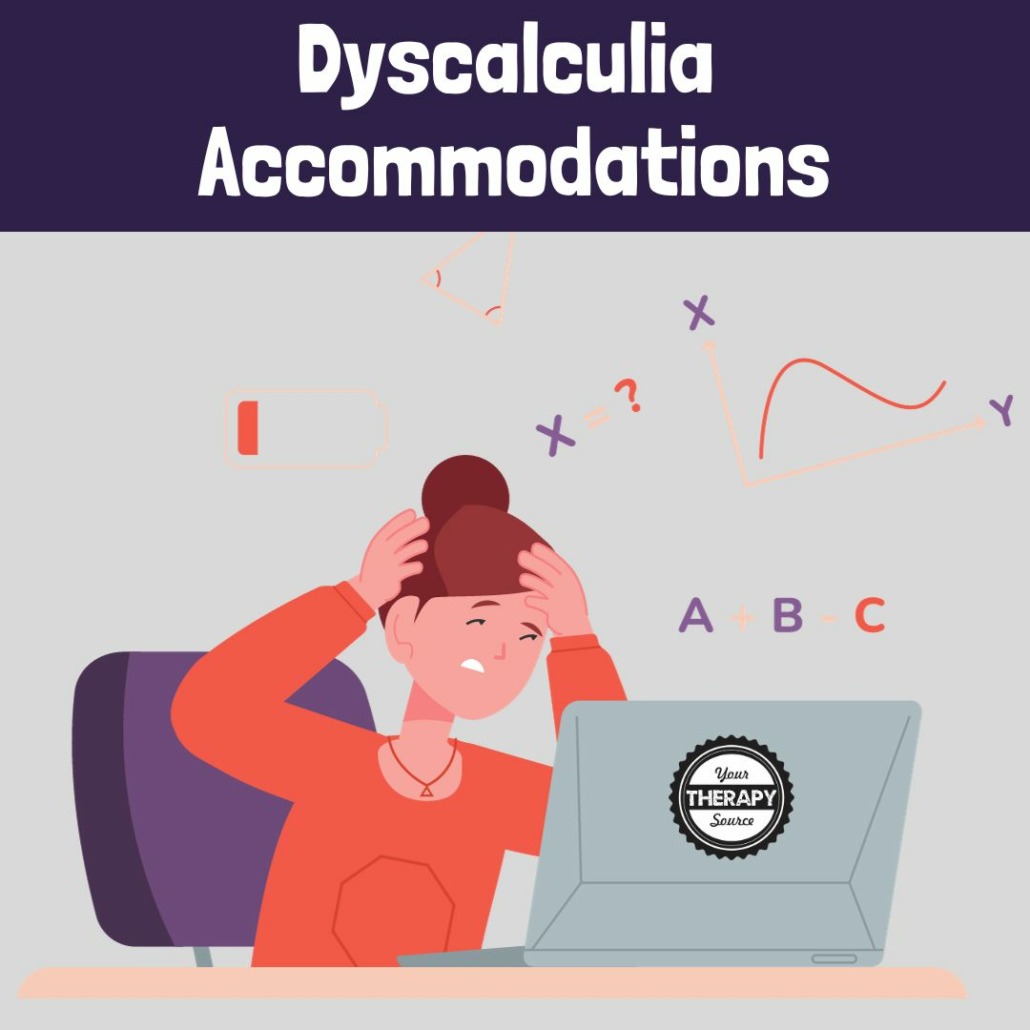Dyscalculia Accommodations
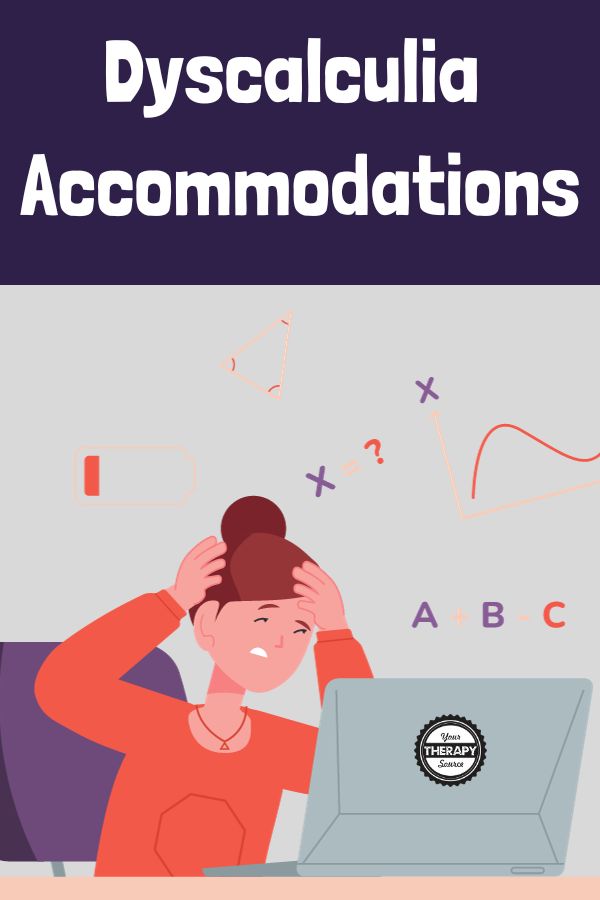
Dyscalculia is a specific learning disability that affects one’s ability to understand and perform mathematical tasks. Often described as “math dyslexia,” this neurological condition can impact students from elementary school to college, influencing their basic math skills, number sense, and quantitative reasoning abilities. Like other learning disabilities, dyscalculia can be a lifelong challenge, but the right dyscalculia accommodations can make a significant difference. Read on to explore the myriad of accommodations and support available for those with dyscalculia.
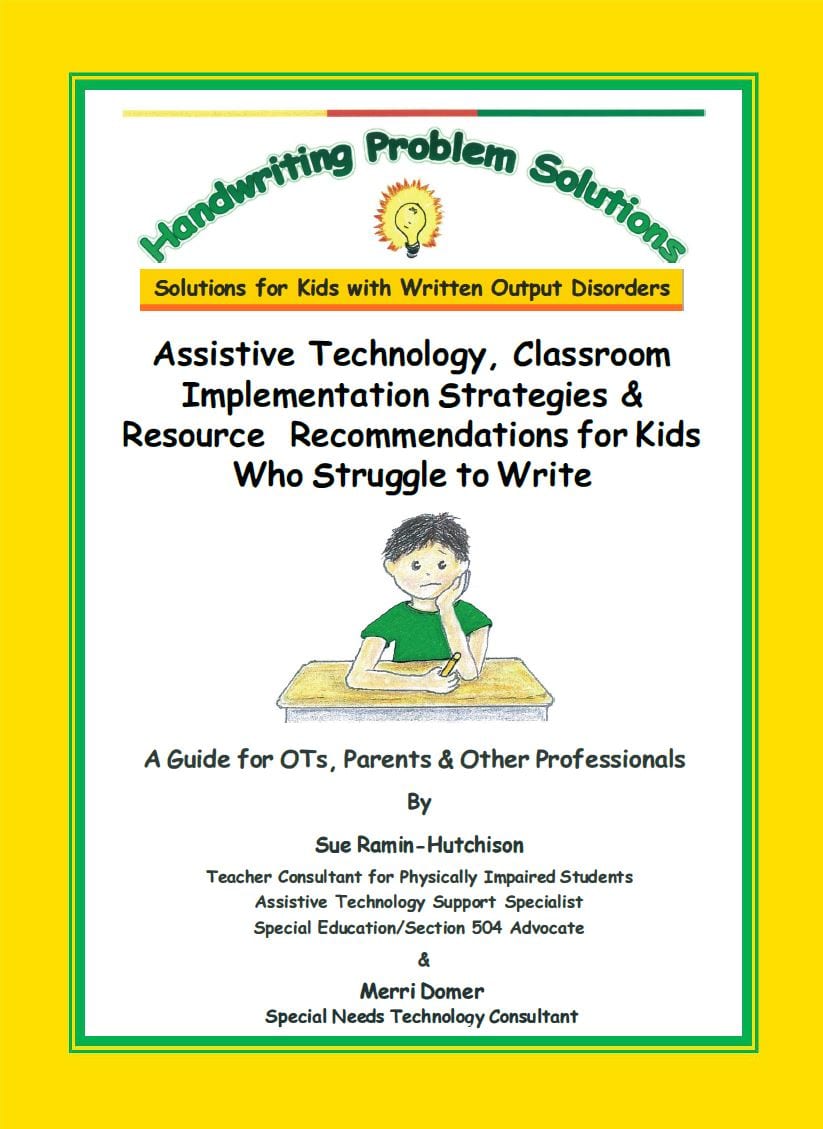
Assistive Technology, Classroom Implementation Strategies & Resource Recommendations for Kids Who Struggle to Write
Understanding Dyscalculia
What is Dyscalculia?
Often mistaken for general math anxiety or a temporary condition, dyscalculia is a distinct neurological condition that affects an individual’s ability to understand basic math concepts, perform mental computation, and engage in quantitative reasoning. This is not due to a lack of effort or education but is connected to differences in brain structure. Those with dyscalculia struggle with number sense, an intrinsic sense of mathematics, often finding simple math facts, multiplication tables, and word problems daunting.
Signs of Dyscalculia
Recognizing the symptoms of dyscalculia early on can make a profound difference in a child’s learning process. These signs can range from a hard time understanding number lines or visual-spatial skills to difficulty in grocery shopping or recalling basic multiplication tables. Even foundational math skills taught in elementary school or 4th grade, which come quickly to other children, might prove challenging. It’s essential to communicate with the child’s teacher or a learning specialist if you notice any symptoms.
Accommodations for Students with Dyscalculia
Classroom and Homework Modifications
- Use of a Calculator: Permitting the use of calculators can help students overcome challenges related to basic math facts and long division.
- Reference Sheet: Providing a sheet with math formulas, multiplication tables, or critical information can aid in comprehension and recall.
- Graphic Organizers: Tools like graph papers or other visual aids can assist in structuring math problems or understanding new concepts.
- Oral Examinations: In some cases, students might benefit from expressing their understanding through oral instead of written exams.
Learning and Presentation Accommodations
- Multisensory Learning: Engaging different senses can significantly aid the learning process. Special educators might use tangible objects, visual aids, or auditory cues to explain math concepts.
- Step-by-Step Instructions: Breaking down complex problems or new concepts into smaller, digestible steps can make learning more accessible.
- Frequent Breaks: Some students may need breaks to process information and avoid feeling overwhelmed.
Exam and Assessment Accommodations
- Extra Time: One of the most common accommodations is providing students additional time to complete math problems, especially during tests.
- Response Accommodations: Allowing students to record answers in different ways or using tools like number lines can aid their understanding.
It’s worth noting that the right accommodations should be tailored to the student’s specific needs and challenges. An independent educational evaluation can be a useful tool in determining what might help the most.
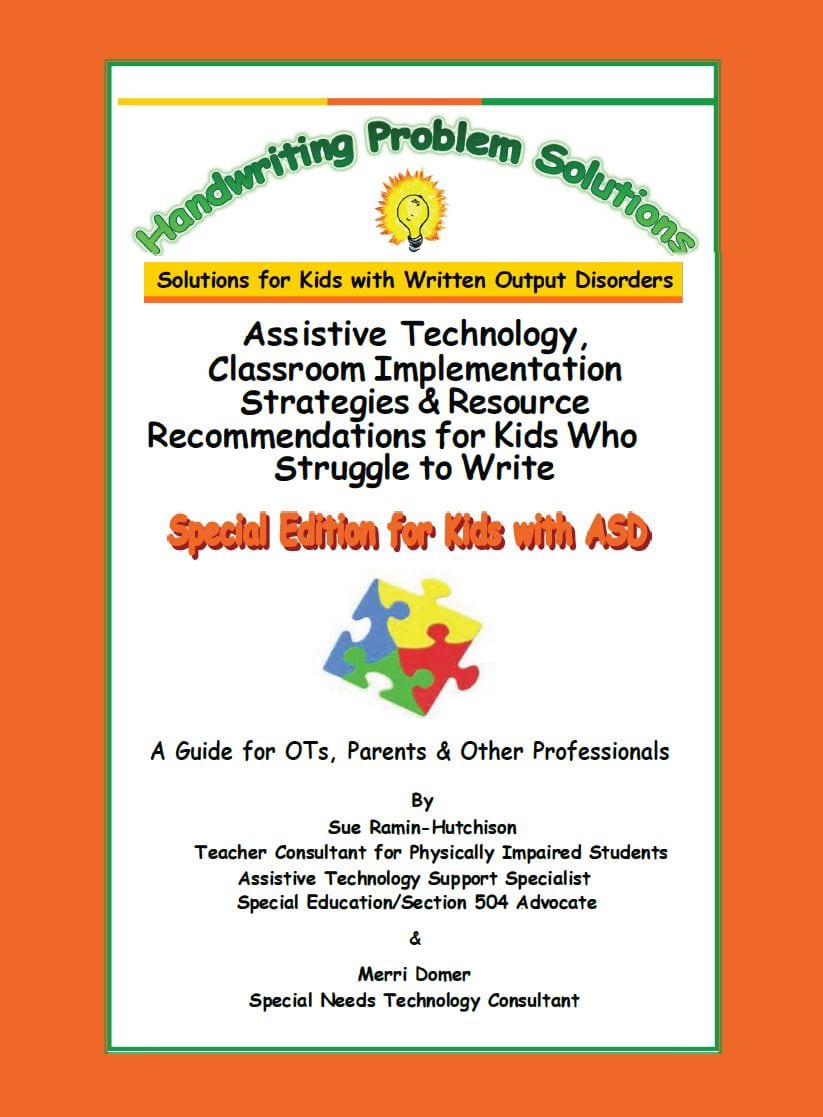
Special Edition for Kids with ASD – Recommendations for Kids Who Struggle to Write
Examples of Dyscalculia Accommodations by Age
Recognizing the signs of dyscalculia and implementing tailored accommodations can make a significant difference in a student’s academic journey. These accommodations can change as the student progresses through school, given their evolving needs and curriculum complexity. Let’s explore the specific examples of accommodations for students in elementary school, middle school, and high school.
Elementary School
Strengths: At this age, students might have a robust visual memory, making them good at tasks that rely on pattern recognition or storytelling. They may also be particularly adept at verbal communication.
Weaknesses: Basic math facts, number sense, foundational math skills, understanding of basic concepts such as addition or subtraction, and difficulties with word problems might be evident.
Accommodations:
- Use of tangible objects (like counting blocks or abacus) to teach basic math concepts.
- Incorporating stories and real-life examples to explain basic arithmetic.
- Use of visual aids like number lines or graph paper for better understanding.
- Offering frequent breaks during math lessons or tasks.
- Allowing the use of basic calculators for more complex arithmetic.
Middle School
Strengths: By middle school, students with dyscalculia might have developed coping mechanisms and might excel in areas that don’t rely heavily on math, such as language arts or history. Their visual and auditory memory might still be a strong suit.
Weaknesses: Difficulties could arise with more complex math problems, understanding new math concepts, multiplication tables, long division, and starting algebra.
Accommodations:
- Use of a calculator for complex problems.
- Reference sheets for formulas or multiplication tables.
- Extended time on tests and quizzes.
- Offering the opportunity for oral explanations instead of written answers.
- Breakdown of complex problems into step-by-step processes.
- Utilizing graphic organizers to help structure word problems or complex math tasks.
High School
Strengths: At this stage, many students with dyscalculia can articulate their challenges and have a better understanding of their learning style. They might excel in subjects that require critical thinking, analysis, or qualitative reasoning.
Weaknesses: Advanced math concepts, algebra, geometry, quantitative reasoning, and word problems in subjects like physics might pose challenges.
Accommodations:
- Use of advanced calculators or software to help with algebra or geometry.
- Providing formula sheets during tests.
- Offering alternative assignments that assess understanding but don’t rely heavily on mathematical computation.
- Extended time for math-related tasks and tests.
- Offering frequent breaks during longer math tasks.
- Collaborative learning opportunities, allowing students to work in groups and leverage each member’s strengths.
Recognizing a student’s strengths and tailoring the learning environment to meet their specific needs can make all the difference in their academic success. Collaboration with the student, classroom teacher, special educators, and the child’s IEP team ensures the best outcomes for students with dyscalculia.
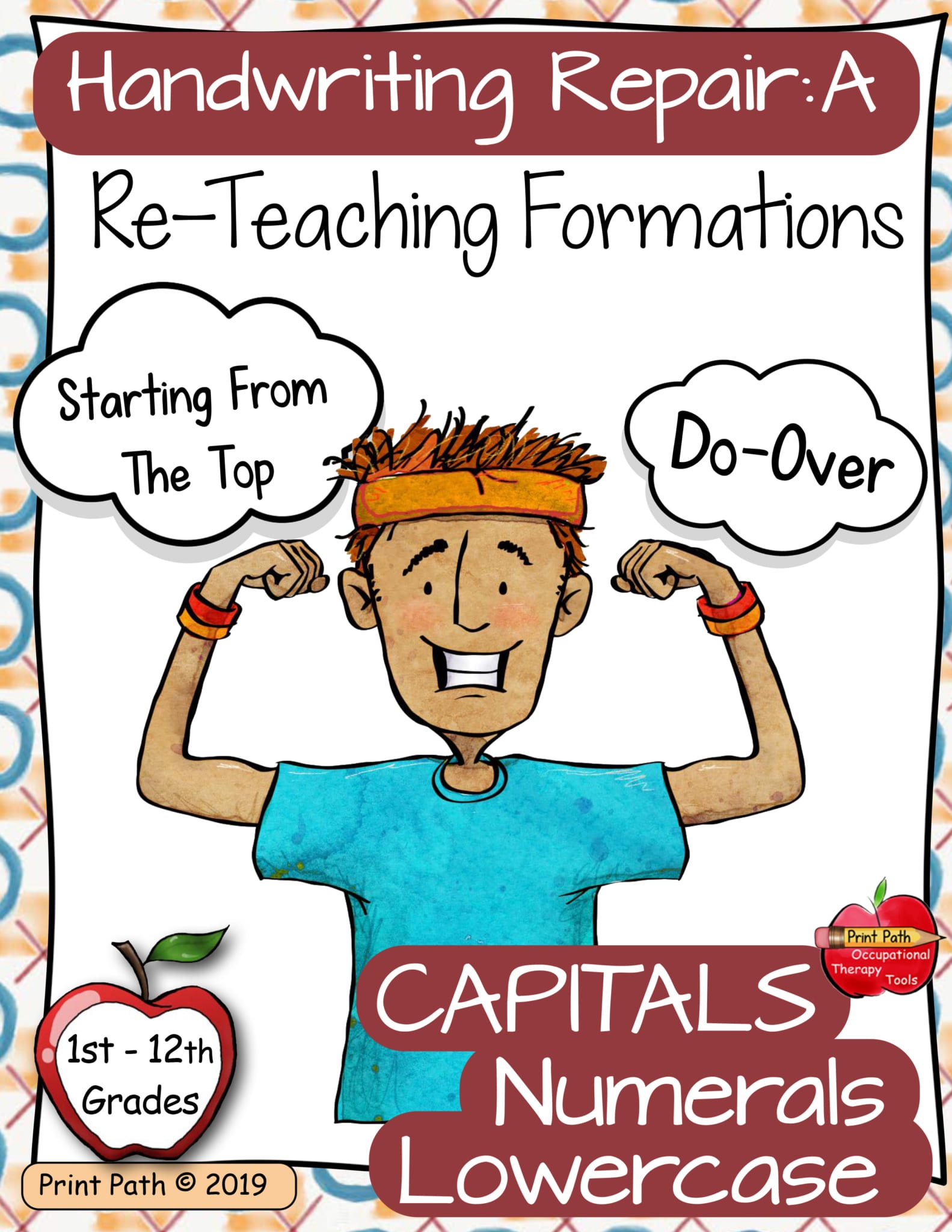
Dysgraphia Handwriting Intervention – Occupational Therapy Tools A: Formations
Dyscalculia and Other Learning Disabilities
Dyscalculia can co-exist with other learning disabilities. For instance, a student might have both dyscalculia and dysgraphia. In such cases, understanding and implementing dysgraphia accommodations alongside dyscalculia accommodations can be crucial. Similarly, students with ADHD might need 504 accommodations for ADHD, and those with emotional and behavioral disorders could benefit from specific accommodations for their challenges. Understanding the whole spectrum of a child’s special needs is essential.
Technology and Dyscalculia
Technology, in general, can be a powerful ally in supporting students with dyscalculia. From apps to browser extensions and specialized software, various digital tools can enhance learning experiences and cater to the unique challenges faced by students with math-related learning disabilities.
How Apps Can Help
- Visual Representation: Many apps allow students to interact with mathematical concepts through visual and tactile means. For instance, some apps might use visual aids, animations, or virtual objects to represent numbers and mathematical operations, helping students understand abstract concepts in a tangible way.
- Customizable Math Workspaces: Apps can offer digital workspaces with adjustable gridlines, helping students organize their math problems better and reduce errors caused by misalignment or disorganization.
- Interactive Tutorials: Some apps provide step-by-step breakdowns of math problems, allowing students to work at their own pace and revisit challenging concepts as many times as needed.
Chrome Extensions for Assistance
- Text-to-Speech: Extensions that read out problems or math concepts can assist students who benefit from auditory learning or have challenges related to reading.
- Color Overlays: Some students with dyscalculia find it easier to process information when they can change the background color of websites or documents. Chrome extensions allow users to adjust these colors, improving contrast and readability.
- Calculator Extensions: Quick access to on-screen calculators, including those that visually represent mathematical operations, can aid in understanding and problem-solving.
Specialized Software
- Math Visualization Tools: Certain software is designed to visualize math problems, turning equations into graphs or interactive 3D models, aiding comprehension.
- Adaptive Learning Platforms: These platforms adjust the difficulty level based on the student’s performance, ensuring they aren’t overwhelmed and receive instruction at a pace tailored to their needs.
- Multisensory Platforms: Software that engages multiple senses—visual, auditory, and tactile—can cater to a wider range of learning preferences and reinforce comprehension through various channels.
What’s the Next Step for Dyscalculia Accommodations?
If you or someone you know struggles with dyscalculia, it’s a good idea to:
- Consult with an Occupational Therapist (OT): An OT familiar with learning disabilities can suggest specific technologies or strategies tailored to individual needs.
- Reach out to the School’s Technology Department: They often have access to or knowledge of a range of technological tools designed to assist students with specific learning challenges.
- Discuss with Teachers: Teachers, especially those specialized in special education, might have experience with various tools or software that have proven beneficial for students with dyscalculia in the past.
Ultimately, the right technological solution depends on the individual’s challenges and preferences. With the collaborative efforts of educators, therapists, and tech specialists, students with dyscalculia can find the tools they need to thrive academically.
FAQs on Dyscalculia Accommodations
What accommodations are available for students with dyscalculia?
Apart from the ones mentioned above, school districts often offer other accommodations in special education tailored to students’ unique needs.
Is dyscalculia an ADA disability?
Yes, dyscalculia is recognized under the Americans with Disabilities Education Act (ADA). This means that students diagnosed with this condition have the right to receive special education services and accommodations in the school setting.
What are accommodations for math problem solving?
Accommodations might include the use of graphic organizers, multisensory learning approaches, extra time, or the use of reference materials and calculators.
What helps with dyscalculia?
In addition to classroom accommodations, interventions from specialists such as occupational therapists, special educators, and tailored lesson plans can make a significant difference.
Understanding dyscalculia and the challenges it poses can pave the way for successful interventions and support. With the right accommodations, children and adults with dyscalculia can flourish in their academic and day-to-day life. Remember, the key is collaboration between parents, educators, and the students themselves.
